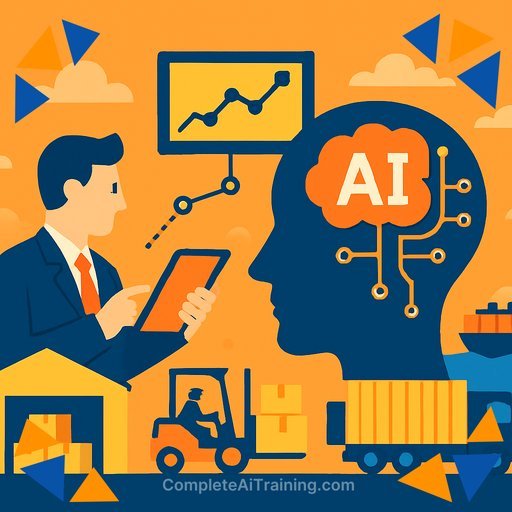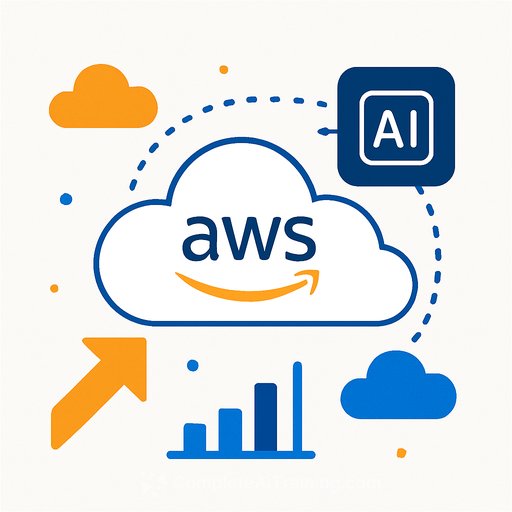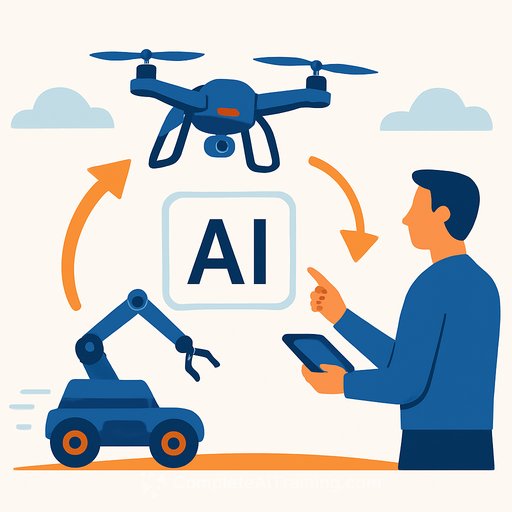The Smart Transformation of Supply Chain Management: How AI Predicts Demand and Optimizes Logistics
Supply chains used to run on reaction: fix stockouts, chase delays, scramble after trends. That model breaks at global scale. AI flips the script by turning operations predictive-seeing issues early, allocating resources before they're needed, and cutting waste across the network. Still, only 23% of supply chain organizations have a formal AI strategy, according to a recent survey by Gartner.
The takeaway for management is simple: AI isn't a side project. It's a system change that moves logistics from cost center to growth engine.
Demand forecasting that actually works
Forecasting based on last year's sales can't keep up with volatile markets. AI models combine thousands of signals and update as conditions shift, giving you probability-based forecasts you can act on. The result: better inventory placement, fewer stockouts, and tighter working capital.
- Internal data: Sales history, inventory levels, lead times, promotions.
- External data: Economic indicators, competitor pricing, news cycles, social sentiment.
- Environmental factors: Weather patterns that affect crops, shipping, or local demand.
Example: a system flags a likely spike for seasonal apparel in one region-not just due to the calendar, but because local influencers boosted mentions, long-range weather looks favorable, and a competitor shows limited stock. Inventory moves early, shelves stay full, and margin improves.
Make movement efficient: logistics and routing
Predicting demand sets the "what." Optimization sets the "how." AI improves routing, loading, and facility flow to save time, fuel, and labor-at scale.
Dynamic route optimization goes beyond GPS to include:
- Real-time traffic and weather reroutes.
- Vehicle capacity, loading constraints, and delivery windows.
- Cross-dock scheduling to cut idle time and congestion.
Inside the warehouse, AI improves slotting so fast movers sit close to pick paths. It can direct robots and AGVs, coordinate waves, and reduce touches. The side effect: lower costs and a smaller carbon footprint without adding headcount.
From silos to systems: real-time visibility and risk
Data silos break decision-making. Digital supply chain twins fix that by mirroring your network and updating continuously via IoT sensors across plants, fleets, and facilities. You get a live view across planning, sourcing, manufacturing, and delivery-and a single place to test scenarios.
Early adopters have reported logistics cost reductions of ~15% and service level improvements of ~65% compared with peers, per McKinsey.
- Proactive maintenance: Sensor data (vibration, temperature, pressure) predicts failures and schedules fixes before breakdowns.
- Disruption rerouting: Port closures, factory outages, or supplier risks trigger instant replans for sourcing, inventory shifts, and transport.
The broader digital shift
These same AI systems are showing up everywhere-from container flows to highly personalized applications. The common thread: flexible models that adapt to messy, real-world variables. That's the bar now set for supply chain tech and the customer experience it supports.
What management can do in the next 90 days
- Define the decisions to improve: Forecast accuracy, inventory placement, service levels, or transport cost per mile.
- Unify data: Connect orders, inventory, shipments, and external signals into one model-ready layer.
- Pilot, don't boil the ocean: Pick one product family and one region; run a 12-week forecast and replenishment test.
- Stand up a digital twin: Start with your top DCs and lanes; layer in IoT data where it matters most.
- Automate the loop: Let the model not only predict but also recommend buys, transfers, and routes-with human approval gates.
- Upskill the team: Train planners and ops leads on AI-driven workflows and metrics. For practical courses by role, see Complete AI Training.
The path to autonomous SCM
The end state is a self-correcting network that predicts disruptions, places orders, allocates inventory, and adjusts pricing with minimal manual effort. People set strategy, policies, and exceptions. AI handles the noise.
If you lead operations, the move is clear: pick a high-value slice, stand up the data, run a tight pilot, and scale what works. The companies that do this now will set the service and cost benchmarks everyone else has to chase.
Your membership also unlocks:






